How to Knit a Scarf

Learning how to knit a scarf is a fantastic start to showing off any of your designs and great way to embrace this craft. There is really no need to have a pattern but there are a lot to choose from if a particular design is the one you had in mind.
The scarf can be adapted to any size in length or width to fit a doll, teddy or person.
The type of knitting stitches that can be chosen are a plain knit or purl stitch, a variation of either or a more complicated cable stitch.
The scarf in the picture above is for a person and is 40 stitches in width. The ply of wool was chunky and the needle size was 8mm (0 old UK size).
Scarves can be knitted with a much finer wool on smaller needles if that is what is needed but this will take longer to knit to the required length.
A scarf using 40 stitches was quite wide so as you will be the designer, it is up to you to decide the width, length and pattern. There is no need to follow a pattern just cast on a few stitches spread them out along the needle to see if that is the right width for what you want.
Ones for toys need about 5-10 stitches with 3.25mm (size 10 old UK size) and can use up little oddments of wool.
Once you have decided on the ply of the wool, the size of knitting needles and how many stitches you are going to use. All you need to decide now is what colour or colours to use and the type of pattern.
Steps to how to knit a scarf
1) Make a slip stitch
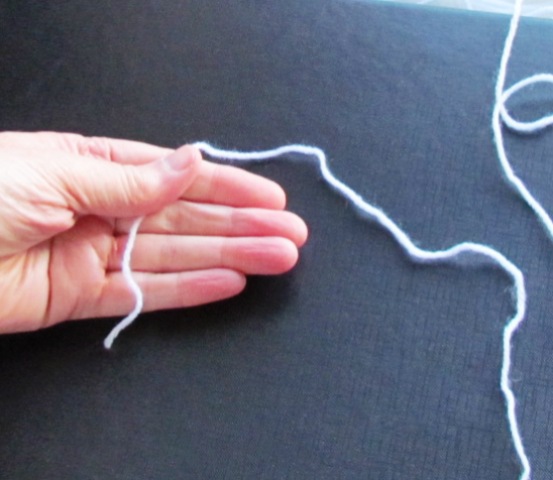
Take wool or yarn between thumb and fingers.
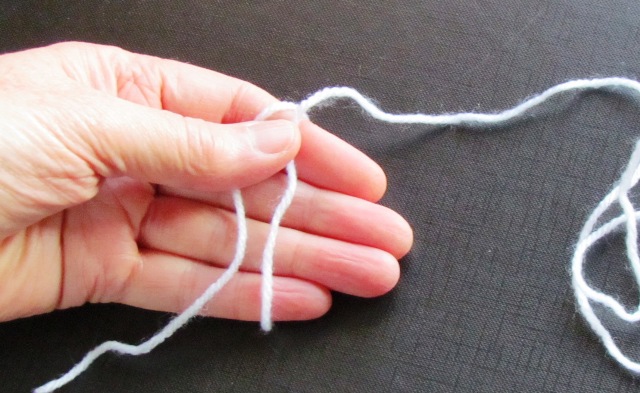
Wrap wool around fingers.
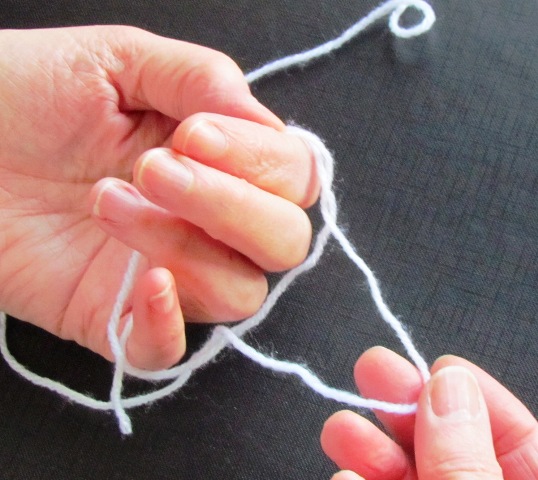
Pull wool through the circle made by wrapping wool around fingers and adjust size
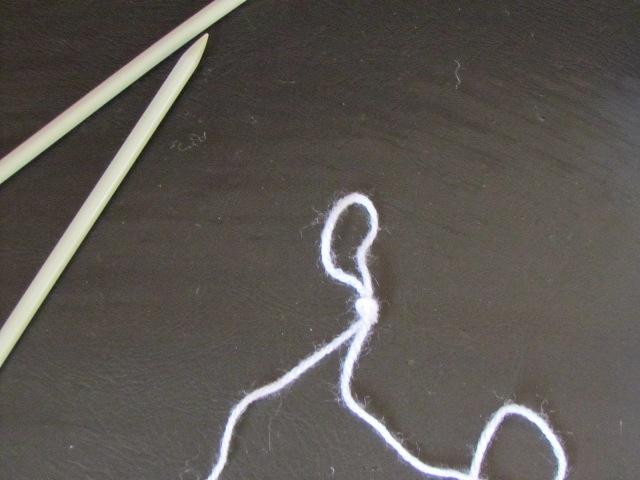
The slip stitch is the first stitch to then cast on the other stitches.
2) Cast on the required amount of stitches.
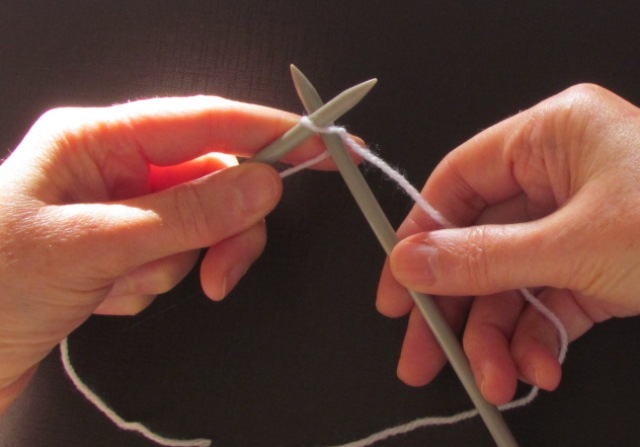
1) Place slip knot on needle. Insert spare needle into the slip stitch so both needles are in the same stitch.
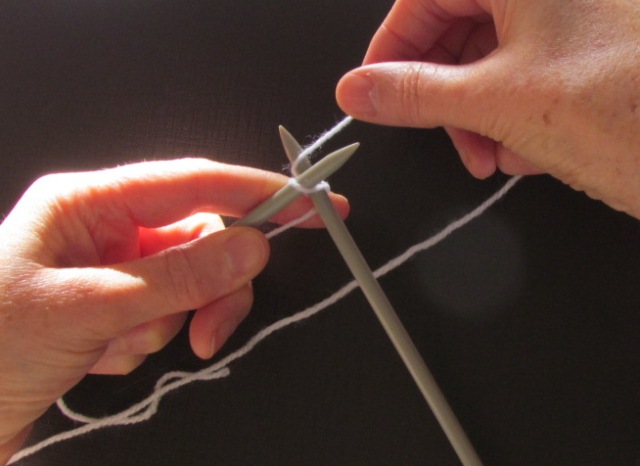
2) Take yarn attached to the ball and not the small end, wrap yarn around spare needle so it ends up between both needles.
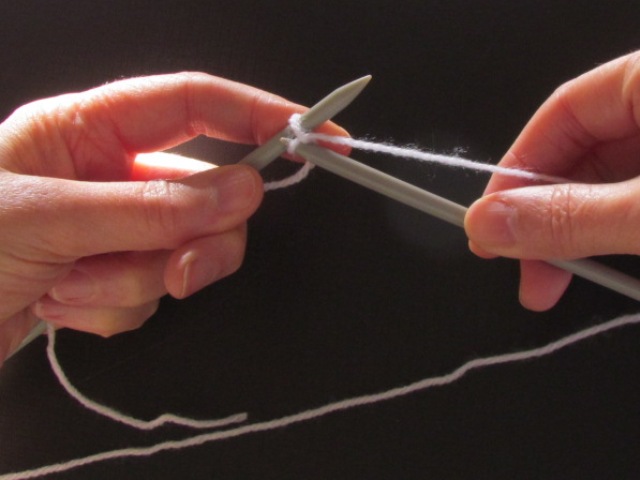
3) Carefully bring spare needle back so it nearly comes out of the loop but then catch the strand that lies between the needles.
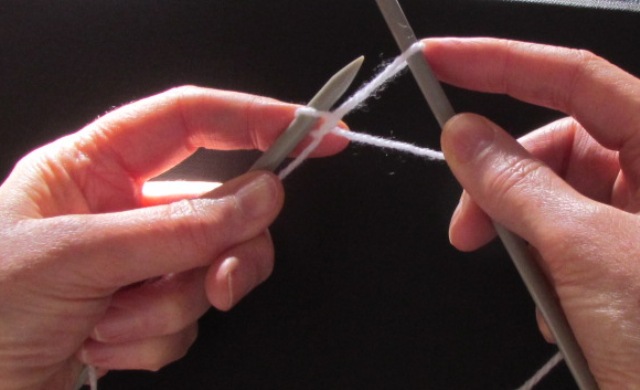
4) Pull the strand through, keeping it on the spare needle to make another loop from the strand of yarn.
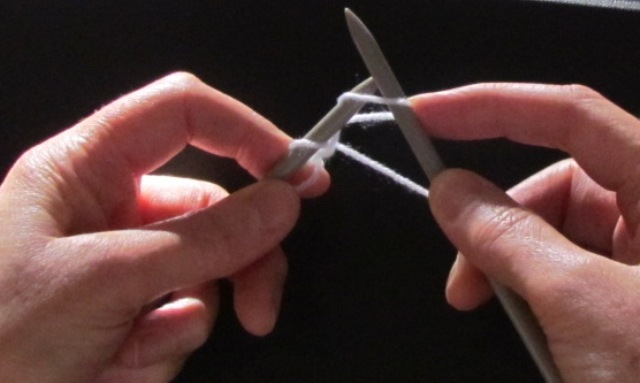
5) Pull new loop and slip onto the first needle tighten the loop onto the first needle by pulling strand of yarn.
6) Continue as from step 2 to cast on the required amount of stitches for your project.
3) How to knit a scarf - Selecting a Pattern
Now that you have decided the colour and thickness of the wool, the size of the knitting needles and how many stitches you have on your needle....all that needs to be decided now, in how to knit a scarf ,is the pattern or a selection of patterns.
In the picture at the top of the page the scarf is in coloured blocks but this could be changed so that the blocks are in the same colour but with different patterns.
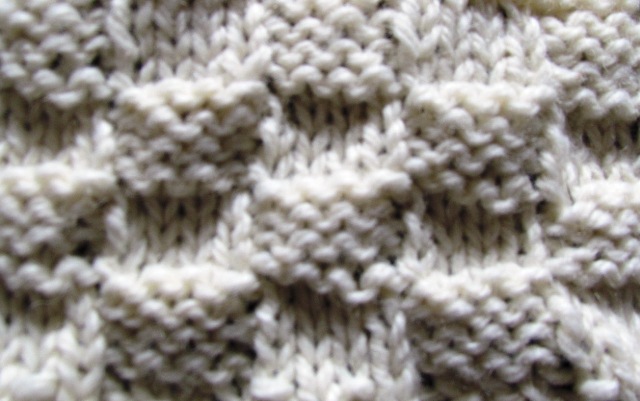
This pattern is a four stitch basket weave knit 4, purl 4 to end of row. Do four rows then on the 5th row alternate the stitches so where there were 4 knit do 4 purl and continue in this pattern
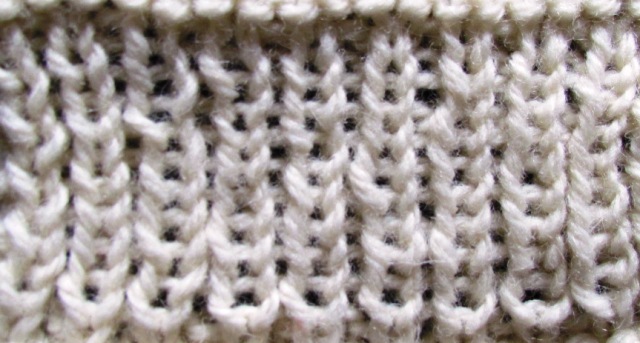
This is a knit 1, purl 1 rib stitch. This is a stitch used for cuffs so the scarf may have a drawn in appearance if knitted in a block sequence.
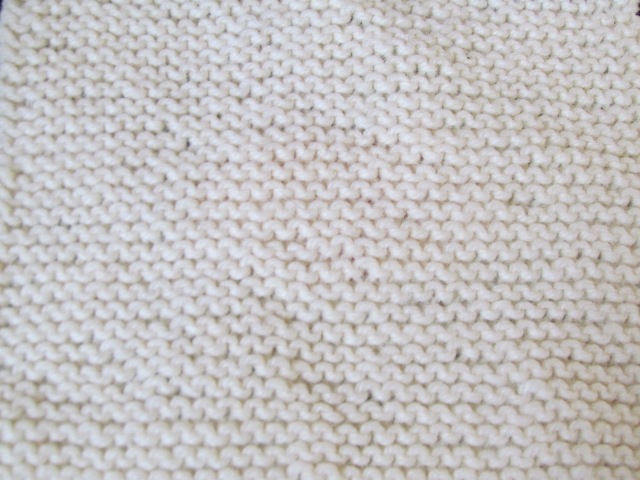
This is just plain knit stitch.
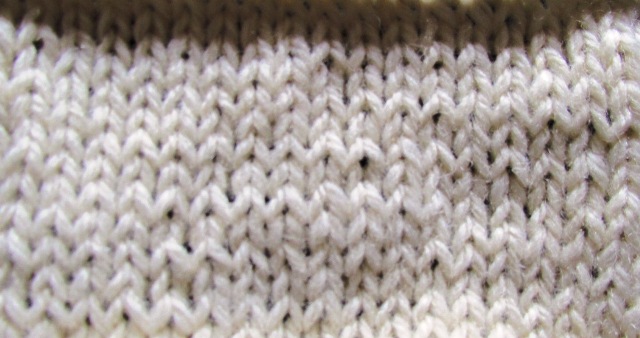
This is stocking stitch which is a row of knit stitch and then a row of purl stitch.

This pattern is moss stitch which is knit 1, purl 1 across the row and on the second row alternate the stitch so where there was a knit on row 1 do a purl on row 2. Alternate the stitches on each row.
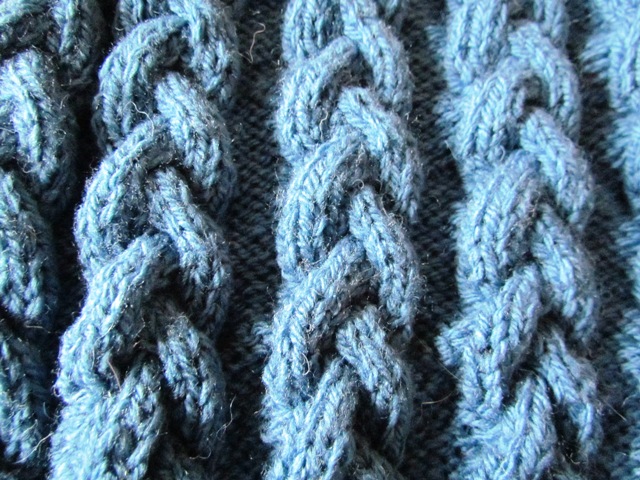
This is a cable stitch and can be used for all the scarf or just a small section in the middle of rib or plain stitches.
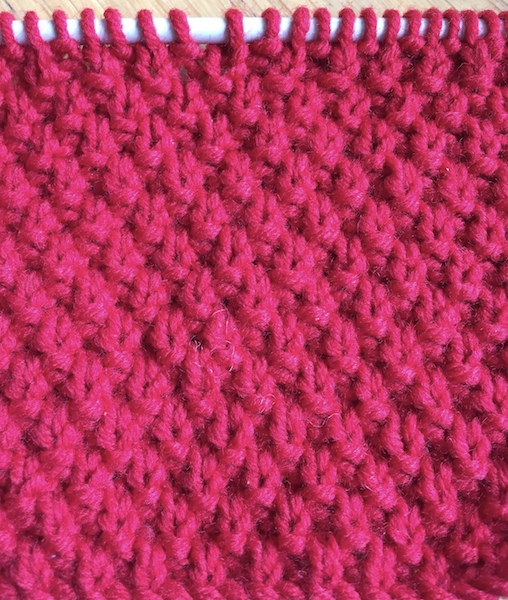
A variation of the moss stitch is this two row moss stitch rib.
First and second rows are knit 1, purl 1 rib and then for the third and fourth rows alternate the pattern and start purl 1, knit 1 as for the moss stitch pattern.
Change the stitch pattern every two rows.
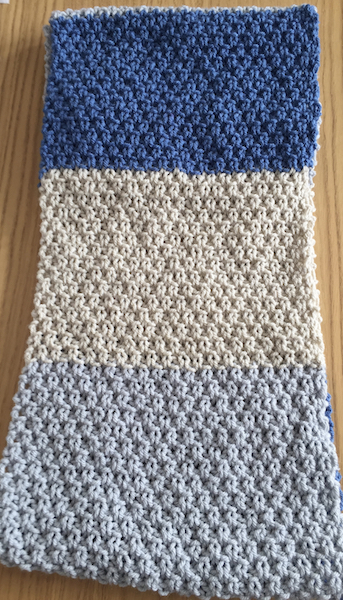
In this scarf the colours were changed every 30 or so rows but it could also be knitted in the same colour with the pattern changed instead.
When you have reached the end just cast off the knitting then sew the end into the edge of the scarf to stop it being seen or worse still unravelling.
There are many off line and on line retailers such as Minerva Crafts to buy wool for your scarf but also sometimes charity shops will have odd balls of wool as well.
These patterns are just an example and there are variations on them all. Ribs can also be done in knit 2, purl 2 etc or 3's or 4's.
Experiment with patterns to get the one you think is just the best and if the knitting has to be pulled down because it is not going right that is no problem.
Once you have found or made a different pattern for your scarf remember to write it down just in case you want to make another one.
Have fun in learning how to knit a scarf...
- Home
- Knitting for Beginners
- How to Knit a Scarf
Affiliate offers
Please take care with any soft furnishing that it does not come into contact with any heat source.
If you have found an error on this page or want some more information on sewing cushions.
Please contact me . Thank you
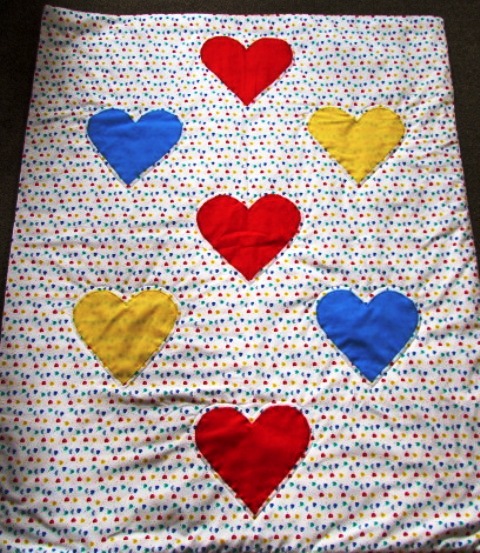
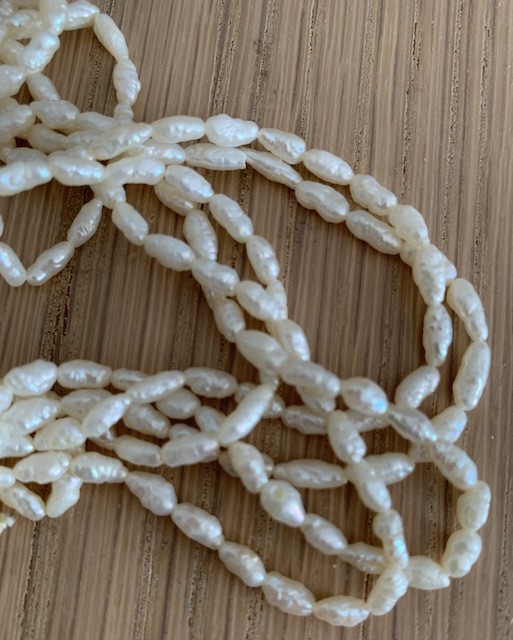
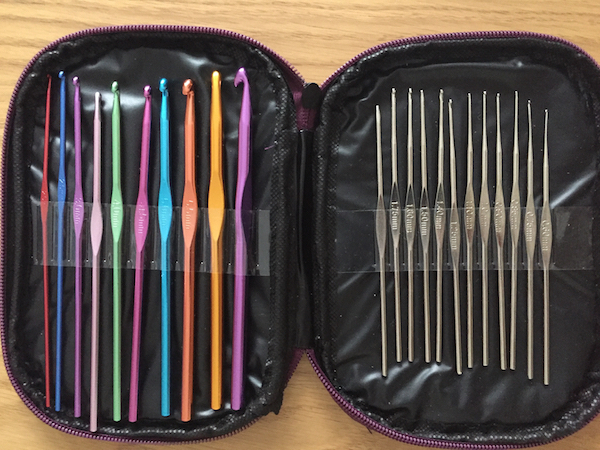
New! Comments
Have your say about what you just read! Leave me a comment in the box below.